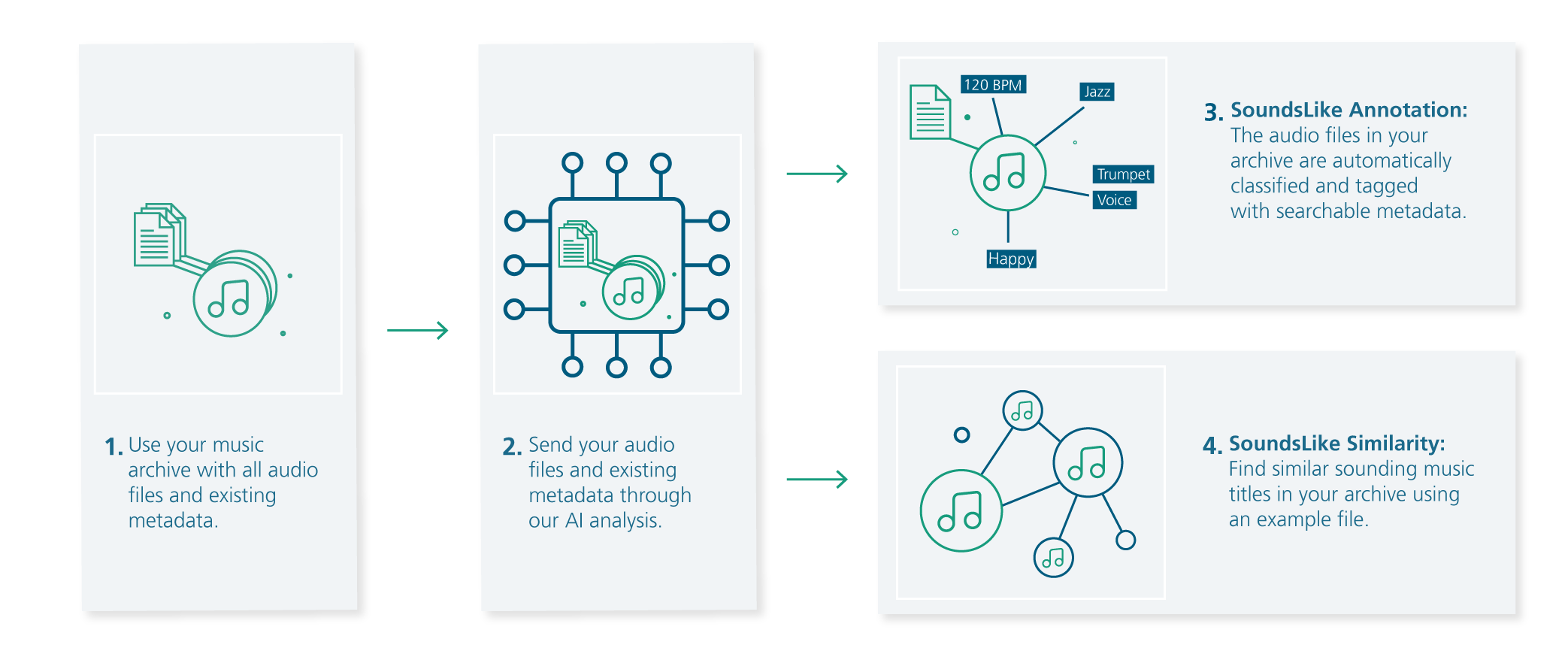Unlock the full potential of your music archive with SoundsLike, the ultimate solution for effective and automatic curation, tailored metadata enrichment, and powerful similarity search.
SoundsLike revolutionizes your music archive by transforming it into a fully indexed and searchable database. With our advanced AI technology, you can annotate and organize music tracks from any source using the same principles. Say goodbye to duplicate content and easily add new tracks to your collection.
From AI research directly into application
Our team of experts combines extensive knowledge in audio signal processing and machine learning to deliver a comprehensive toolset of music analysis solutions. From extracting single notes to capturing harmonic progressions, instrumentation, genres, and moods, SoundsLike can extract a wide variety of valuable information from your audio data. You have full control to choose the categories and data that fit your specific use case.
Your music archive is your treasure – let’s uncover it together.
Your music archive is a treasure trove waiting to be discovered. With SoundsLike, our AI technology analyzes your existing music archive, understands your specific metadata and category system, and optimizes it to suit your needs. Whether you have a diverse production music library or an extensive classical music archive, SoundsLike listens, learns, and identifies the appropriate categories and subcategories for your music catalog.
 Fraunhofer Institute for Digital Media Technology IDMT
Fraunhofer Institute for Digital Media Technology IDMT
